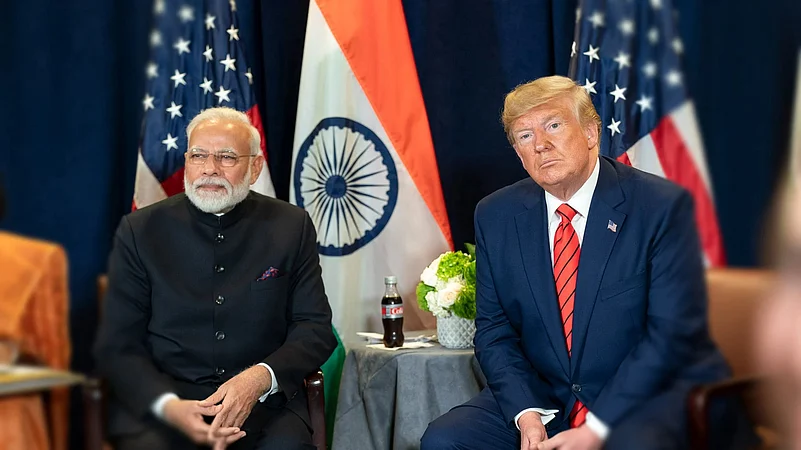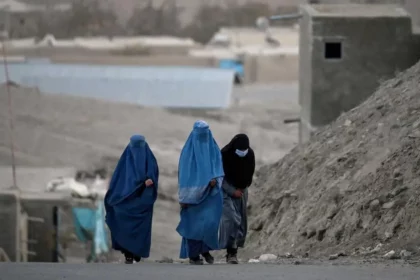The long-standing diplomatic relationship between the United States and India is facing one of its most serious challenges in decades. President Donald Trump’s recent decision to impose an additional 25% tariff on Indian imports has sparked backlash in New Delhi, intensifying tensions over trade imbalances and India’s continued oil dealings with Russia.
India in Trump’s Crosshairs Over Russian Oil
The new tariff, which doubles the existing duty on Indian goods, is widely seen as retaliation for India’s continued import of discounted Russian oil. Despite the US considering India a vital partner in its strategic Indo-Pacific vision to counter China, this move has rattled the foundation of bilateral ties.
Trump’s suggestion that India could consider purchasing oil from arch-rival Pakistan further aggravated the situation. Indian officials were quick to express their disapproval, viewing the comments as provocative and diplomatically insensitive.
India Pushes Back: “Unfair, Unjustified, Unreasonable”
In a strong official statement, the Indian government called the tariff hike “unfair, unjustified, and unreasonable,” vowing to safeguard the nation’s economic and strategic interests. Indian ministries also accused the US of double standards, noting that while India is being penalized for its Russian oil purchases, the US itself continues to import Russian uranium, palladium, and fertilizers.

However, analysts say India has limited leverage in these negotiations, unlike China, which has bargaining power through its exports of rare earth minerals and control of global manufacturing chains.
Strategic Gains at Stake: A Diplomatic Regression
Experts believe the current friction could undo years of progress in US-India relations. From a landmark civilian nuclear deal in 2008 to growing defense partnerships and joint efforts under the Quad alliance, Washington and New Delhi had steadily built strategic trust. But with tensions soaring, the relationship may be sliding back toward the strained post-1998 era, when the US imposed sanctions on India after nuclear tests.
“Modi is caught in a bind,” said Ashley Tellis of the Carnegie Endowment for International Peace. “India may reduce oil purchases from Russia under US pressure, but publicly conceding to Trump’s demands could look like surrender.”
Domestic Pressures and Political Fallout
At home, Prime Minister Narendra Modi is under pressure from opposition parties and a frustrated public to stand firm against Trump’s “bullying tactics.” While Indian refiners have reportedly started scaling back Russian oil purchases, the government is cautious about appearing submissive ahead of domestic elections.
India’s challenges extend beyond oil. The American political landscape is becoming increasingly polarized around issues that directly impact India — such as H-1B work visas, outsourcing, and tech partnerships — making bilateral cooperation even more complex.
Past Tensions Resurface
Images of shackled Indian deportees aboard US military planes, broadcast earlier this year, sparked outrage across India. More recently, allegations of an Indian link to a foiled assassination attempt on a Sikh separatist in the US have further strained ties.
Such events have dented the Modi administration’s standing in Washington and fueled perceptions that New Delhi must be “brought back in line,” according to former diplomats.
Pivoting to New Alliances: BRICS and Beyond
In response to growing friction with Washington, India is looking to strengthen relations with other global partners. Prime Minister Modi is planning visits to China and is expected to host Russian President Vladimir Putin later this year.
Engagement with BRICS nations — Brazil, Russia, China, and South Africa — is also increasing. Brazilian President Luiz Inacio Lula da Silva has expressed interest in initiating a BRICS-led response to Trump’s tariff actions, reflecting a possible shift in global economic alignments.
Conclusion: A Pivotal Moment in India-US Relations
India and the United States now stand at a diplomatic crossroads. With economic pressures mounting and strategic priorities diverging, both nations must tread carefully. As India explores new alliances, the US risks losing a key democratic partner in the Indo-Pacific if diplomatic wounds deepen.
Whether the Trump administration and India’s leadership can find common ground remains to be seen — but the stakes have rarely been higher for both sides.




